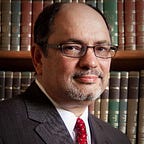History of the Magi: Who were the Wise Men?
Every Christmas season, you’ve heard this song. It has been sung for over 150 years. You’re familiar with the lyrics from this famous 19th century American Christmas carol that begins with the line “We Three Kings of Orient Are…” but it is inaccurate in at least three ways:
- We don’t know how many visitors there were
- But we know they weren’t kings
- They did not originate in the Orient, meaning the Far East
Here’s what we know about these Wise Man.
Location
So how could they have seen the star “in the East” and have arrived in Jerusalem unless they had begun their journey somewhere in the middle of the Mediterranean Sea? It says in the Gospel of Matthew 2:2
“We saw his star in the east, and have come to worship him.”
East?
One natural explanation is to see it in the sense of “We saw his star when we were in the east and have come from the east to worship him.”
Several traditions place their number at three, with the conjecture of three gifts for three givers: gold, frankincense, and myrrh. But some earlier traditions make quite a caravan of their visit, setting their number as high as twelve.
Etymology
The term Magi — from magoi the plural of the Greek word magos — is usually translated wise men, astrologers, or magicians. Indeed, the word “magic” comes from the word magi. “The East,” has been variously identified as any country from Arabia to Media and Persia, but usually no further east than Persia.
Origin
What we know about their background suggests either a Mesopotamian or Persian origin for the magi, who were known to be an old and powerful priestly caste among both the Medes and Persians. These priest-sages who were exceptionally well educated for their day were specialists in a variety of disciplines, including medicine, religion, astronomy, astrology, divination, and magic, and their caste eventually spread across much of the East. As is true in any occupation, there were both good and bad magi, depending on whether they did research in the sciences or practiced the dark arts of augury and necromancy.
The Persian magi at least were credited with higher religious and intellectual attainments, while the Babylonian magi were sometimes considered impostors. The safest conclusion is that the Magi of Christmas were Persian. Indeed, the term originated among the Medo-Persians, and early Syriac traditions give them Persian names.
Early Christian art in the second-century Roman Catacombs of Pricilla, which I have visited on the Via Salaria in Rome, dresses them in Persian garments, and a majority of early church fathers understand them to be Persians.
Bethlehem
The Church of the Nativity in Bethlehem was built in the 4th century by Emperor Constantine‘s mother, St. Helena, upon the traditional site where Jesus was born. Admittedly it is the only major church in the Holy Land that survives intact from the early Christian period. Even the famed Church of the Holy Sepulchre in Jerusalem — which today features four (or five) of the Stations of the Via Dolorosa — has traditions that only go back to the fourth century.
In A.D. 614, the Church of the Nativity had a narrow escape. A Sassanian army from Persia had invaded the Holy Land and proceeded to destroy all the churches. However, they desisted at Bethlehem because they recognized the images of their ancestors, the Magi, above the entrance to the Church of the Nativity in Persian headdress. This account makes sense because the Magi were traditionally represented in early Christian art as Zoroastrian priests.
According to the liturgical calendar, their feast day is January 6, also known as Epiphany, marking the end of the 12 Days of Christmas, or Christmastide.
Bill Petro, your friendly neighborhood historian
www.billpetro.com
Inspired in part by Paul L. Maier’s In the Fullness of Time
If you enjoyed this article, please consider leaving a comment, or subscribing to the news feed to have future articles delivered to your feed reader, or to your email.
